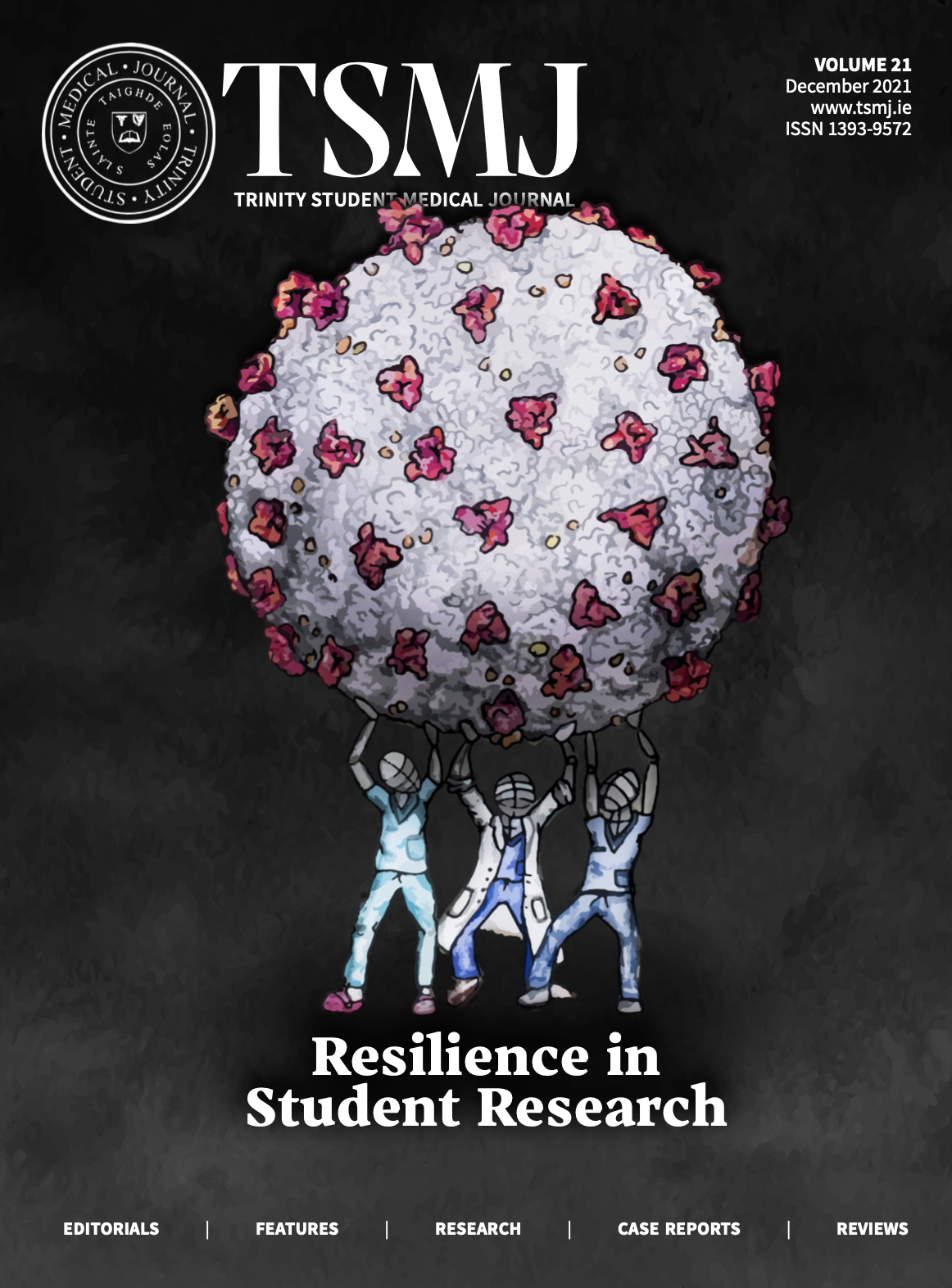The Trojan Bacillus: Transgenic Bacteria in Cancer Therapy
Keywords:
Synthetic biology, Oncology, Targeted therapyAbstract
A classic conundrum in oncology is the identification of cancer-specific, druggable molecules which can be targeted with minimal systemic toxicity. A novel candidate for administering cancer therapeutics has emerged in bacteria, which may prove to be excellent delivery vehicles for biologics whose systemic delivery causes severe and unacceptable adverse effects. Bacteria are well-suited to this role due to their ability to colonise tumour microenvironments, synthesise drug molecules, and potentiate innate and adaptive immune responses. Genetic clockwork in the form of quorum sensing mechanisms allows these bacteria to lyse on demand, releasing therapeutic payloads into tumours. Recent in vivo evidence outlined here support this hypothesis, yet there is a great deal of research and refinement still to be done.
Downloads
References
2. Forbes NS. Engineering the perfect (bacterial) cancer therapy. Nat Rev Cancer [Internet]. 2010;10(11):785–94. Available from: http://dx.doi.org/10.1038/nrc2934
3. Chowdhury S, Castro S, Coker C, Hinchliffe TE, Arpaia N, Danino T. Programmable bacteria induce durable tumor regression and systemic antitumor immunity. Nat Med [Internet]. 2019;25(7):1057–63. Available from: http://dx.doi.org/10.1038/s41591-019-0498-z
4. Gurbatri CR, Lia I, Vincent R, Coker C, Castro S, Treuting PM, et al. Engineered probiotics for local tumor delivery of checkpoint blockade nanobodies. Sci Transl Med. 2020;12(530).
5. Abisado RG, Benomar S, Klaus JR, Dandekar AA, Chandler JR. Bacterial quorum sensing and microbial community interactions. MBio. 2018;9(3):1–14.
6. Mukherjee S, Bassler BL. Bacterial quorum sensing in complex and dynamically changing environments. Nat Rev Microbiol [Internet]. 2019;17(6):371–82. Available from: http://dx.doi.org/10.1038/s41579-019-0186-5
7. Papenfort K, Bassler BL. Quorum sensing signal-response systems in Gram-negative bacteria. Nat Rev Microbiol [Internet]. 2016;14(9):576–88. Available from: http://dx.doi.org/10.1038/nrmicro.2016.89
8. Danino T, Mondragón-Palomino O, Tsimring L, Hasty J. A synchronized quorum of genetic clocks. Nature. 2010;463(7279):326–30.
9. Din MO, Danino T, Prindle A, Skalak M, Selimkhanov J, Allen K, et al. Synchronized cycles of bacterial lysis for in vivo delivery. Nature [Internet]. 2016;536(7614):81–5. Available from: http://dx.doi.org/10.1038/nature18930
10. Lee YJ, Jeong KJ. Challenges to production of antibodies in bacteria and yeast. J Biosci Bioeng [Internet]. 2015;120(5):483–90. Available from: http://dx.doi.org/10.1016/j.jbiosc.2015.03.009
11. Bannas P, Hambach J, Koch-Nolte F. Nanobodies and nanobodybased human heavy chain antibodies as antitumor therapeutics. Front Immunol. 2017;8(1603):1–13.
12. Hu Y, Liu C, Muyldermans S. Nanobody-based delivery systems for diagnosis and targeted tumor therapy. Front Immunol. 2017;8(NOV):1–17.
13. Darvin P, Toor SM, Sasidharan Nair V, Elkord E. Immune checkpoint inhibitors: recent progress and potential biomarkers. Exp Mol Med [Internet]. 2018;50(12):1–11. Available from: http://dx.doi.org/10.1038/s12276-018-0191-1
14. Kwang Chae Y, Arya A, Lams W, Cruz M, Chandra S, Choi J. Current landscape and future of dual anti- CTLA4 and PD-1/PD-L1 blockade
immunotherapy in cancer; lessons learned from clinical trials with melanoma and non- small cell lung cancer (NSCLC). J Immunother Cancer. 2018;6(39):1–27.
15. Postow MA, Chesney J, Pavlick AC, Robert C, Grossmann K, McDermott D, et al. Nivolumab and ipilimumab versus ipilimumab in untreated melanoma. N Engl J Med. 2015;372(21):2006–17.
16. Toso JF, Gill VJ, Hwu P, Marincola FM, Restifo NP, Schwartzentruber DJ, et al. Phase I study of the intravenous administration of attenuated Salmonella typhimurium to patients with metastatic melanoma. J Clin Oncol. 2002;20(1):142–52.
17. Duong MTQ, Qin Y, You SH, Min JJ. Bacteria-cancer interactions: bacteria based cancer therapy. Exp Mol Med [Internet]. 2019;51(152). Available from: http://dx.doi.org/10.1038/s12276-019-0297-0
Downloads
Published
How to Cite
License
Authors retain copyright and grant the journal the right of first publication with the work simultaneously licensed under a Creative Commons Attribution (CC-BY) 4.0 License that allows others to share the work with an acknowledgement of the work’s authorship and initial publication in this journal.
Provided they are the owners of the copyright to their work, authors are able to enter into separate, additional contractual arrangements for the non-exclusive distribution of the journal’s published version of the work (e.g., post it to an institutional repository, in a journal or publish it in a book), with an acknowledgement of its initial publication in this journal.



